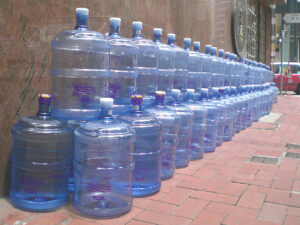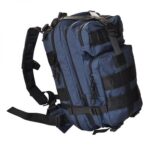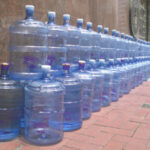October 19, 2024 SHTF
My advice is always to do your research and then make the best decisions for your situation.
Emergency food supplies. Water and food in particular

As many people probably already know, water is the number one emergency commodity.
But food is a close second.
A person can go up to 8 weeks without food as long as they have water.
But who wants to do that ?
More importantly, in a real emergency situation, how could you live without regular meals, even if they were rationed ?
The choice of food types and storage methods is quite important, but the best place to start is with how many calories we need each day.
In fact, for moderately active people between the ages of 14 and 40, 2,000 to 2,800 calories per day are sufficient, provided that 45-65% of these calories (about 130 grams of food) are carbohydrates and about 10% (but no more than 35%) are proteins.
Carbohydrates are found in grains (wheat, oats, rice), beans, starchy vegetables (potatoes, sweet potatoes, peas, corn), and fruits.
Protein sources also include beans and vegetables such as peas, but are also found in nuts and all types of meat.
Always remember to keep these foods in your pantry.
As mentioned earlier, water is the first priority, at least 4 liters per day.
FEMA recommends at least a two-week supply for each family member.
An adequate portable water filtration system is also needed, of course.
The second priority is an emergency kit : first aid supplies, flashlights, and a battery-powered radio
Then it is time to prepare the pantry.
Emergency food planning
The first step is to decide what foods to keep in your emergency pantry.
A good balance of dairy products, meats, legumes, grains, vegetables, and fruits is needed.
Cooking oil, spices, salt, vinegar, baking powder, and baking soda are also important.
It is also a good idea to keep a supply of high-energy snacks on hand, since emergency situations often require intense physical exertion.
Whether you are preparing a pantry for a month or a year, you should always aim for a minimum of about 2,000 calories per day for adults and about 1,500 for children.
The calories should not come from sugar in sweets or sugary drinks.

Food storage
Food should be stored away from moisture.
Dry staples such as flour and rice, liquid canned foods such as fruit or vegetable juices, and other foods with low moisture content such as coffee should be stored in sealed, moisture-proof containers.
Emergency food supply
This is certainly not an easy decision.
There are three factors to consider :
Available budget
Duration of the emergency period
Quality of the food
In addition, it is also necessary to evaluate :
Effective portion size
Nutritional value
Variety of foods in the package
Cost per unit
Shelf life
An important storage alternative is the use of dehydrators to dry fresh fruits, vegetables, and meats.
How to store food supplies
Sometimes it can be difficult to store a large supply of food for emergencies because the space available in your home is not large or there are no suitable locations.
The first thing to remember is that an adequate water supply is always a priority.
Then one must always remember that the most important precautions for long-term food storage are :
Humidity can be minimized if the food storage area is kept dry and the containers in which the food is stored are placed on pallets so that they are off the floor.
The temperature should not exceed 20°C (maximum 25°C), lower is better.Light should be kept away from cooking oil and any products stored in Polyethylene terephthalate (PET) bottles.
Insect damage can be minimized by using aluminum bags for storage.
If you live in a house in the suburbs or in the country, it is very likely that a place in the house can be easily allocated for an emergency food supply.
But if you live in an apartment building, things are more complicated.
Spaces behind furniture, under the bed, or on the top shelf of the closet can be used.
Unfortunately, the more supplies you have in different places, the harder it is to keep track of them and control both temperature and light.
Many food manufacturers claim that dry goods have a shelf life of at least 25 years.
But the reality is quite different.
Dry goods that can last more than 30 years (if properly packaged) include wheat, white rice, dry beans and grains.
But those that still retain some moisture or oil content, such as barley, whole wheat flour, meat, nuts, and brown rice, are not intended for long-term storage.
Of course, there are many other options available to you when preparing an emergency pantry.
I recommend that you always do your research and then make the best choices for your situation.
Any emergency situation is already very stressful no matter what.
But in this case, at least you do not have to worry so much about basic necessities, especially water and food.











